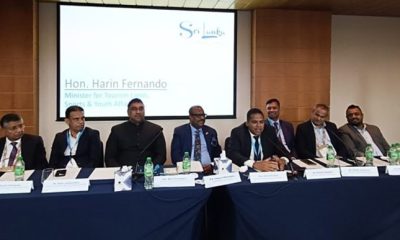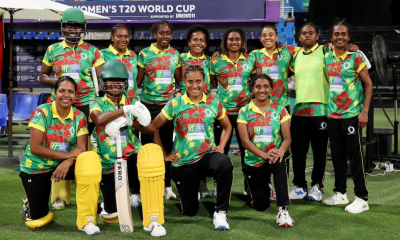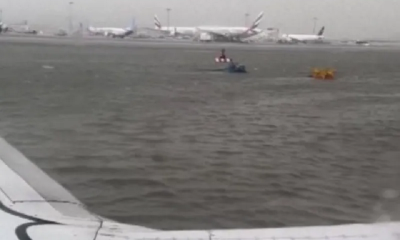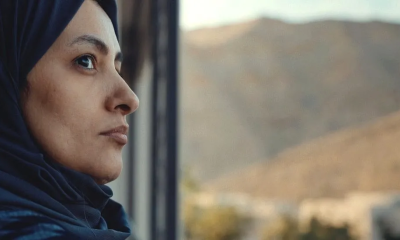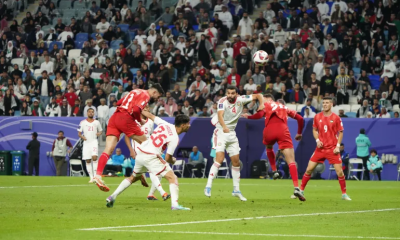Latest News
COP28: Poor countries win 30-year fight for climate cash as Loss and Damage Fund becomes a reality

In a surprise that has lit up COP28, delegates have agreed to launch a long-awaited fund to pay for damage from climate-driven storms and drought.
Such deals are normally sealed last minute after days of negotiations.
COP28 president Sultan al-Jaber shook up the meeting by bringing the decision to the floor on day one.
The EU, UK, US and others immediately announced contributions totalling around $400m for poor countries reeling from the impacts of climate change.
Three decades after the idea was first mooted, the ‘loss and damage’ cash agreement was greeted with sustained applause on the conference floor.
It was seen as a smart move by the UAE, which has been criticised in the run up to the COP, after the BBC reported on Monday that leaked briefing documents revealed plans by the United Arab Emirates to discuss fossil fuel deals with 15 nations.
“It’s a very clever way to open the conference on the part of the UAE,” said Prof Michael Jacobs from the University of Sheffield and an observer at these talks. “They have gotten in the very first session, one of the most important parts of this whole conference agreed, a very contentious part, the United States was not happy just a few weeks ago with the text on this loss and damage fund, and it’s agreed to it today.”
Loss and damage refers to the impacts that many countries suffer from climate-related weather events.
While funding has been provided to help countries adapt to rising temperatures, and to aid their efforts to rein in their emissions, no money has been forthcoming to help with the destruction caused by storms and droughts. The idea of finding cash for these losses was first introduced in the 1990s.
For decades, richer countries fought tooth and nail against the idea of such a fund, wary of having to pay “compensation” for historic carbon emissions.
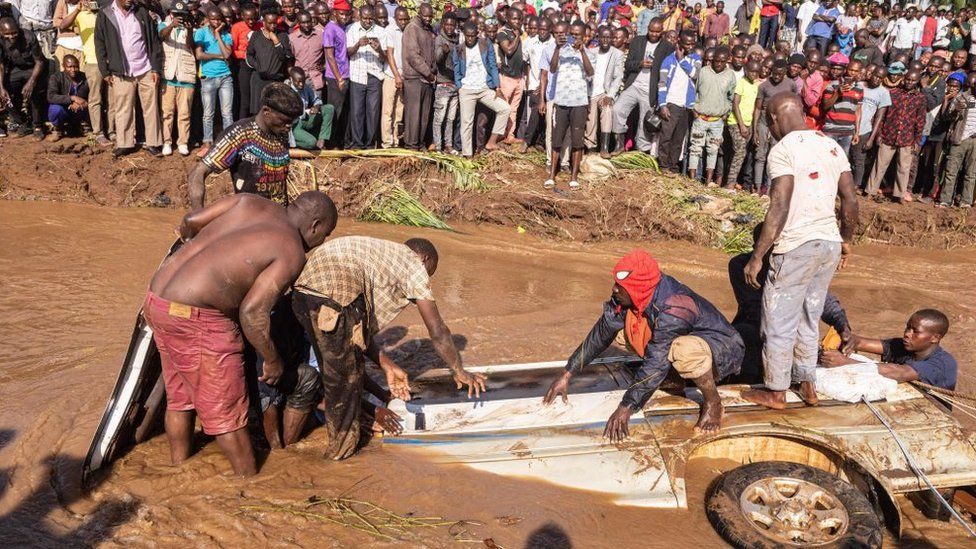
Last year at COP27 in Egypt, the moral force of the argument won the day and countries agreed to set up a fund. Over the past 12 months countries had argued about the rules, where the fund should be located and who should pay in. A tentative agreement was reached a few weeks before this gathering in Dubai.
Any such deal would normally have to be accepted by all countries in a plenary session, where negotiators can go through the text with a fine-tooth comb, often leading to major arguments. This usually happens at the end of a COP after days and nights of wrangling.
“We have delivered history today,” Jaber told delegates as the motion was passed without a fight. Immediately the UAE made a pledge of $100m as did Germany. The US says it will pay in $17m, providing it can find agreement with Congress. They wanted all countries to know that paying in didn’t mean they accepted that the fund was about reparations for historic emissions.
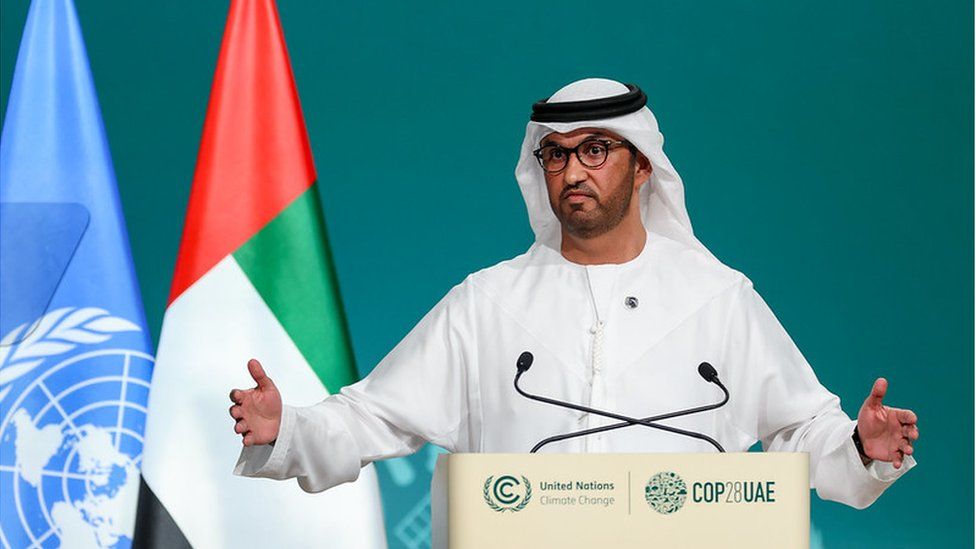
“We have been working very, very closely with other transitional committee members this entire year in order to design an effective fund that is based on cooperation and does not involve liability or compensation,” said US Special Climate Envoy, John Kerry.
The UK promised £60m to the fund. Campaigners said it was a small step in the right direction. “It is encouraging to see that the UK Government is committed to making the Loss and Damage Fund a reality, but this pledge is simply not enough and crucially, it’s not new money,” said Chiara Liguori, Oxfam’s Senior Climate Justice Policy Advisor.
It’s hoped the deal will provide the momentum for an ambitious wider agreement on action during the summit.
The stakes for that couldn’t be higher: the day began with stark warnings from the UN chief that “we are living through climate collapse in real time”. António Guterres said the news that it’s “virtually certain” 2023 will be the hottest year on record should “send shivers down the spines of world leaders”.
(BBC)
Latest News
Argentina secures $42bn from IMF, others as it lifts currency controls
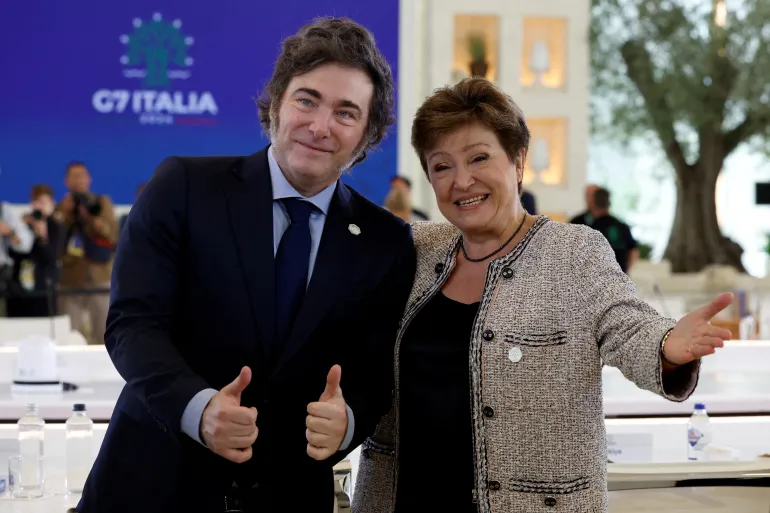
Argentina has clinched $42bn in medium-term funding from the International Monetary Fund (IMF) and two other financial institutions as it announced it is abandoning most of its tight currency controls.
The IMF’s executive board late on Friday approved a $20bn bailout package that will be doled out over the next four years, with an immediate disbursement of $12bn and another $2bn available after a review planned for June.
The World Bank also announced a $12bn support package for Argentina, and the Inter-American Development Bank (IDB) said it will provide up to $10bn in financing for the public and private sectors. Both are three-year plans.
President Javier Milei announced on Friday that he will – starting on Monday – lift most of Argentina’s strict capital and currency controls as part of agreements that secured the huge funding deals.
“Today we are breaking the cycle of disillusionment and disenchantment and are beginning to move forward for the first time,” he said on national television while flanked by his ministers. “We have eliminated the exchange rate controls on the Argentine economy for good.”
The capital controls, known in Argentina as “el cepo” or “the clamp”, were imposed by a previous administration in 2019 with the aim of preventing further financial downfall and capital flight that the country has been dealing with for years.
The controls clamped down on individuals’ ability to buy US dollars, giving rise to a black market that is widely used by citizens. They also restricted companies’ access to dollars, discouraging foreign investment that Milei needs.
The Argentinian central bank now aims to allow the peso to trade within a so-called currency band instead of firmly pegging the beleaguered currency to the dollar.
The band ranges from 1,000 to 1,400 pesos per greenback and will expand by 1 percent each month, according to the central bank.
In announcing its latest support package, the IMF said the programme is “expected to catalyse further official financing from multilateral sources” and “seeks to facilitate a timely return to international capital markets”.
“The program supports a path toward entrenching macroeconomic stability, strengthening external sustainability, and laying the foundation for stronger and more resilient growth,” it said, adding that its key pillars include “maintaining a strong fiscal anchor, transitioning towards a more robust monetary and FX regime”.
The organisation praised Argentinian authorities’ new commitment to a zero-deficit budget target, which has delivered the first fiscal surplus in almost two decades.
But to achieve the surplus, Milei has fired tens of thousands of state workers, with his overhauls hitting the population hard, including by raising poverty levels.
[Aljazeera]
Latest News
PNB detect large haul of methamphetamine and heroin in local fishing trawler intercepted by Navy
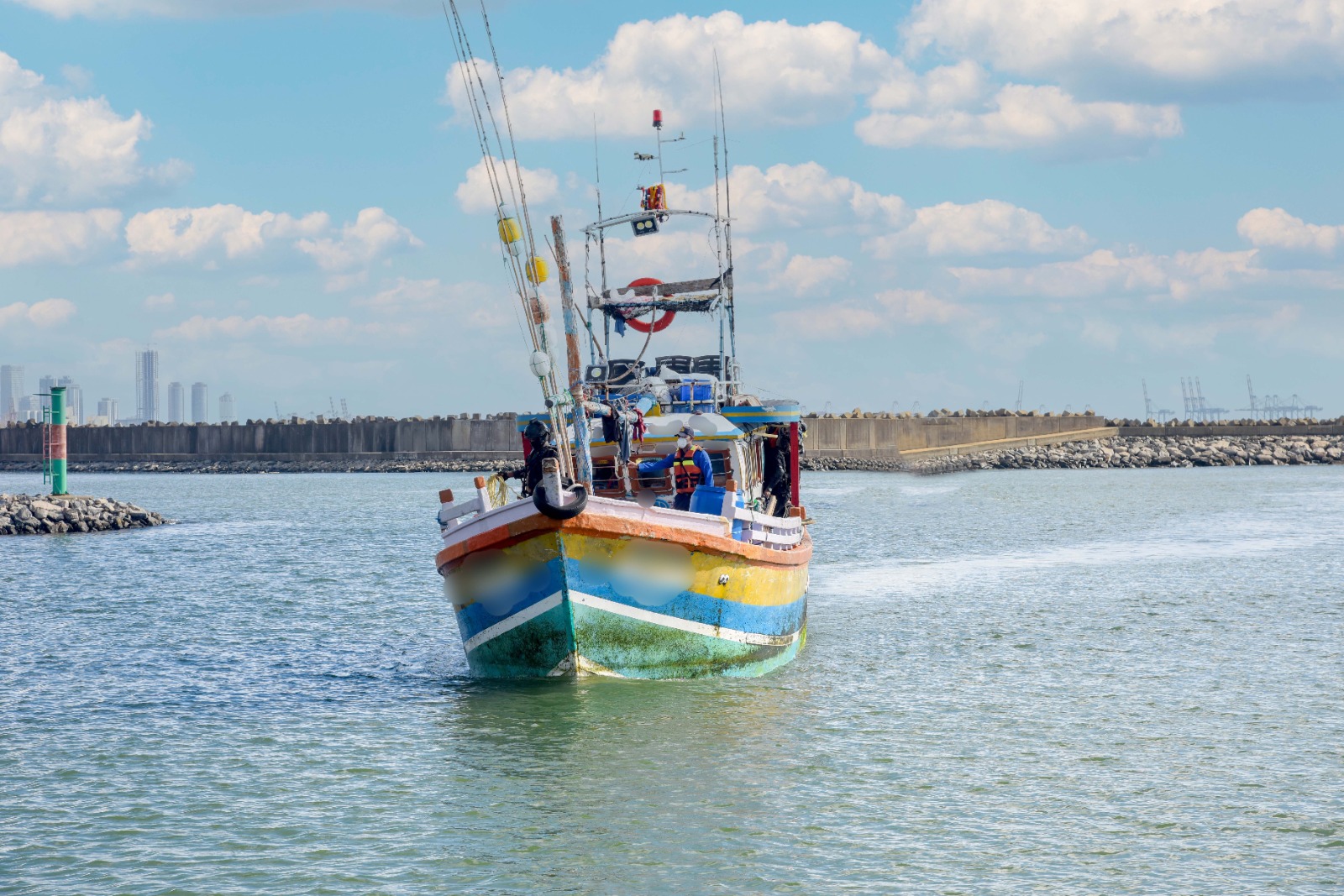
Acting on credible information, the Sri Lanka Navy launched a special operation on the high seas on 11 Apr 25, resulting in the apprehension of 06 suspects along with a local multi-day fishing trawler, believed to be involved in smuggling of narcotics.
Subsequently, the intercepted trawler was brought to the Dikkowita Harbour, where a thorough inspection was carried out with the assistance of the Police Narcotic Bureau (PNB) experts, leading to the detection of approximately 77kg and 484g of heroin and 42kg and 334g of methamphetamine (Ice).
The consignment, which had been meticulously hidden in the trawler, was handed over to the PNB for onward legal action on 12 Apr.
Latest News
Sun directly overhead Thunukkai, Olumadu, Oddusudan, Kumulamunei and Chemmalei at about 12:11 noon. today [13]

On the apparent northward relative motion of the sun, it is going to be directly over the latitudes of Sri Lanka during 05th to 14th of April in this year.
The nearest areas of Sri Lanka over which the sun is overhead today (13th) are Thunukkai, Olumadu, Oddusudan, Kumulamunei and Chemmalei at about 12:11 noon.
-

 Business7 days ago
Business7 days agoColombo Coffee wins coveted management awards
-

 News2 days ago
News2 days agoSuspect injured in police shooting hospitalised
-

 Features3 days ago
Features3 days agoRobbers and Wreckers
-

 Features5 days ago
Features5 days agoSri Lanka’s Foreign Policy amid Geopolitical Transformations: 1990-2024 – Part III
-

 Midweek Review5 days ago
Midweek Review5 days agoInequality is killing the Middle Class
-

 Features7 days ago
Features7 days agoSri Lanka’s Foreign Policy amid Geopolitical Transformations: 1990-2024 – Part I
-

 Business2 days ago
Business2 days agoSanjiv Hulugalle appointed CEO and General Manager of Cinnamon Life at City of Dreams Sri Lanka
-

 Features6 days ago
Features6 days agoA brighter future …


